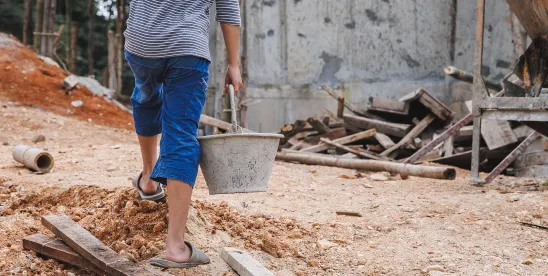Since the inception of the Uyghur Forced Labor Prevention Act (UFLPA), importers globally have started to become acutely aware of potential forced labor risks hidden beneath intricate supply chains.
On July 9, the Forced Labor Enforcement Task Force (FLETF) published the second mandatory annual update to the UFLPA, Strategy to Prevent the Importation of Goods Mined, Produced, or Manufactured with Forced Labor in the People’s Republic of China. The Strategy was first published in 2022, shortly before the UFLPA took effect in June 2022, and offered the importing community some initial guidance on the new law. In the latest iteration of the Strategy Update, the FLETF touts the expansion of the UFLPA Entity List, designates polyvinyl chloride (PVC), aluminum, and seafood as new high-priority sectors for enforcement, and outlines future targeting and enforcement plans. While this Strategy Update was unsurprising in many ways, it does highlight that the US government will focus on enforcement of the UFLPA and importers in allindustries must prepare.
Expansion of the UFLPA Entity List
The FLETF was initially slow to add companies on the UFLPA Entity List. During its first year, a mere 10 entities were added from June 2022 to July 2023. Amidst criticism from US Congress and importer requests for a more useful list and transparency, there has been a relatively substantial increase this reporting year, with 38 further additions. The UFLPA Entity List now includes a total of 68 entities, 38 of which were added in the last 13 months. Note that the FLETF now counts entities and their subsidiaries individually rather than as a single listed entity. The listed entities comprise a variety of sectors beyond the original priority sectors including agriculture, batteries, electronics, food additives, household appliances, nonferrous metals, plastics, and textiles, which are not limited to entities located in the Xinjiang Uyghur Autonomous Region (XUAR).
Historically, the FLETF’s focus on UFLPA Entity List designations was mainly on manufacturers/producers of goods made with forced labor or entities that source materials made with forced labor. However, due to the continued lack of visibility into complex People’s Republic of China (PRC) supply chains, the FLETF will also turn its attention to exporters that export goods made wholly or in part with forced labor. We expect that this expanded approach will lead to new additions on the UFLPA Entity List.
This will be something to watch, as the Strategy Update also confirms that removal from the UFLPA Entity list is very challenging given that, to date, no removal requests have been recommended or approved, despite three pending removal requests. As we previously reported, companies have filed suits with the Court of International Trade challenging the FLETF’s determination to include them on the UFLPA Entity List or the issuance of a withhold release order (WRO). While these cases are still pending, early indications are that the courts have deferred to the US government in their determinations. The outcome of these cases will potentially impact the future of the UFLPA Entity List and WRO designations.
The Strategy Update Identifies PVC, Aluminum, and Seafood as New High-Priority Sectors
Congress and the FLETF originally identified apparel, cotton and cotton products, silica-based products including polysilicon, and tomatoes and downstream products as “high-priority” sectors for UFLPA enforcement. However, as we predicted in our guide, the FLETF has confirmed the additions of PVC, aluminum, and seafood to this list. This move was not unexpected as these sectors have been subject to Congressional scrutiny, non-governmental organization (NGO) reports of allegations of forced labor in the sectors’ supply chains, and reported increases in detentions. Additionally, PVC and aluminum were highlighted in a special US Customs and Border Control (CBP) addendum of information required for the release of detained goods.
- PVC- The focus appears to be on PVC flooring. However, PVC is also commonly used in construction and other everyday products. XUAR produces more than 10% of the world’s PVC and reports have indicated that the government of the PRC has continued to expand production.
- Aluminum-The Strategy Update specifically references the significance of aluminum in large-scale industries including automobile, railway, aerospace, navigation, and other industries. The Strategy Update also states that the XUAR produces more than 15% of China’s aluminum, or 9-12% of the global aluminum supply. Aluminum producers, Xinjiang Shenhuo Coal and Electricity Co., Ltd., Xinjiang East Hope Nonferrous Metals Co., Ltd., and the Xinjiang Production and Construction Corps were all also previously included on the UFLPA Entity List.
- Seafood- The FLETF added seafood to the list of high-priority sectors because of alleged labor transfers in this sector. While the Strategy Update does not specify whether certain types of seafood will be under more scrutiny than others, NGO reports (see The Outlaw Ocean Podcast) indicate that squid and salmon are particularly prone to forced labor risks. Because these types of reports influence CBP’s enforcement efforts, companies that have touchpoints with these species should pay close attention.
Key Takeaways from the Updated Strategy
- Public and NGO reports continue to play a pivotal role in the enforcement of the UFLPA. The FLETF relies heavily on NGO reports and other public news in identifying new high-priority sectors for these determinations. The FLETF’s continued collaboration with public organizations advances enforcement initiatives and broader policy objectives.
- Given the FLETF’s new approach to Chinese exporters, we will likely see more companies added to the UFLPA Entity List. As additional companies are added, importers should continue to monitor and evaluate their supply chains to ensure they are mitigating any potential touchpoints with these entities.
- The designation of new high-priority sectors will likely be coupled with increased enforcement actions by CBP. Given that the new high-priority sectors, especially PVC and aluminum, are used in many downstream products (e.g., automotive products, building and construction, tubing), importers should continue to assess their supply chains for potential risk exposure.
- Technology will play an increasing role in assisting CBP with targeting and enforcement as well as reviewing detention responses and admissibility requests.
- Increased scrutiny of certain commodities (e.g., batteries, steel, tires, certain electronics) may indicate future additions to the high-priority list. Importers in all industries should implement forced labor due diligence procedures as the government continues to expand enforcement efforts into new industries.
Next Steps
The recent developments in UFLPA enforcement reinforce the importance of performing due diligence to identify potential risks in an importer’s supply chain.
Kendall Murphy contributed to this article





 />i
/>i
